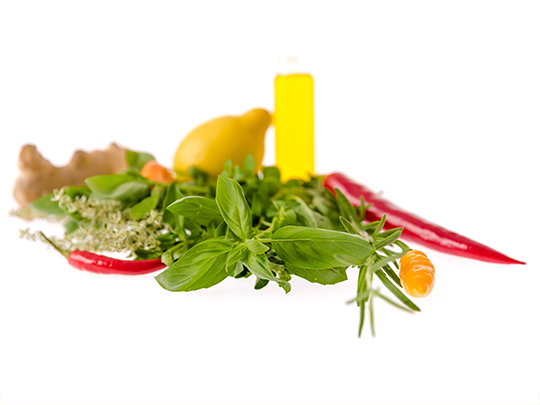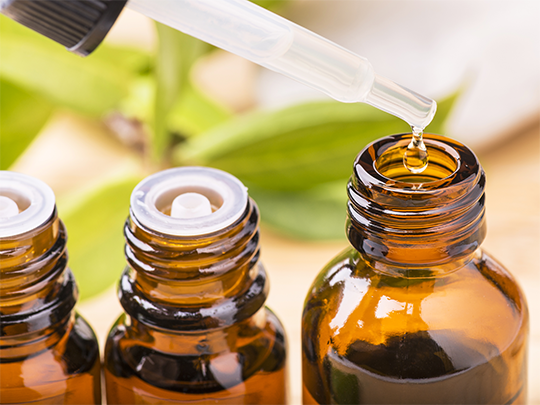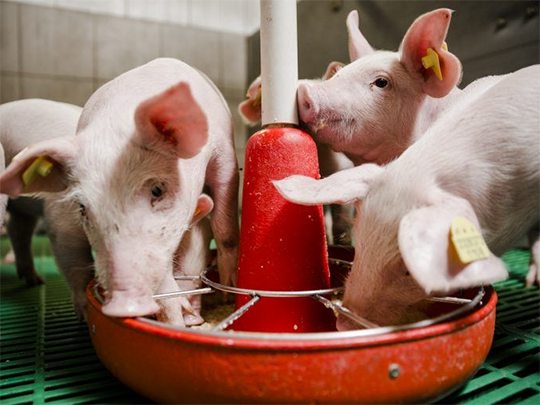It needs palatability to increase feed intake
Did you know that sows reduce feed intake with a temperature of 21°C and above? - it can be up to 100 g per degree. Benefit from the advantages of aromatic phytogenics to maintain feed intake even under stressful conditions.
Animals may not succumb to the powerful smell of buttered popcorn in a movie theater like we do, but they are still influenced by their senses. When it comes to livestock animals’ feed intake, palatability, sensory stimulation and external factors all play a role. Find out how to improve palatability with phytogenics…
It’s been said we taste with our senses first. Researchers say 80 percent of the flavors we taste come from our sense of smell. Anyone who has ever been turned off by a strong, smelly cheese or enjoyed the warm aromas of mulled cider or fresh-baked bread knows that is certainly true. Not only do we want our food to look good, it has to check the box for sensory stimulation before we’ll consider if it tastes good or is nutritious. This sensory factor is why herbs and spices are key to cooking – and key to improve feed intake: They add both nuanced flavors and aromas.

Did you know?
We can distinguish 5 different flavors: Salty, sweet, bitter, sour and umami. While taste is experienced with the mouth, aroma is in turn experienced by the nose. When you chew and swallow, you always inhale some air through your nose. By means of the olfactory tissue in the nasal mucosa, the aroma is perceived.
Thus, aroma is referring to a smell, while flavor refers to taste.

Palatability is influenced by characteristics of feed such as texture and sugar content. For instance, molasses is often added to dairy cattle feed as cows like the sweet taste and therefore want to eat more of it. Sensorial stimulation is all about feed having a pleasant and enticing aroma, which builds animals’ anticipation for the feed and keeps them coming back for more. While the industry’s focus has historically been on palatability, sensory factors have been increasingly recognized for their role in feed intake particularly for livestock species that have a heightened sense of smell. Beyond these positive feed intake factors, there are many external factors that can negatively influence feed intake including heat stress, weaning, challenges during fattening/finishing period, transport or illness.

When external factors bring feed intake down, palatability and sensorial stimulation really step up to the plate. During stressful situations, livestock animals are disinclined to eat at their normal rate. However, a palatable and pleasant-smelling ration can entice livestock to eat more during critical periods. This boost in sensorial stimulation can help maintain a consistent feed intake, ultimately increasing growth rate and performance.
How phytogenics influence palatability and sensory factors
Phytogenics can contribute to increased palatability and sensorial stimulation of livestock feed, which makes a lot of sense when you consider the phytogenic ingredients. Many of the substances found in phytogenics – derived from herbs, spices, other plants and their extracts– you may recognize from recipes in your kitchen. Cooks know a fresh herb like thyme can be the difference between an ordinary food and one that awakens your senses. The compelling flavor and aroma added to feed through substances such as herbs, spices and essential oils enhances palatability and ultimately feed intake.
Next time you catch the wafting smell of herbed roasted potatoes or garlic bread, think of how phytogenics can improve both the aroma and taste of livestock feed to help animals maintain feed intake.

Anne Oberdorf
Anne has always been fascinated by the unknown, the diversity and beauty of nature. Her love for nature brought her to Delacon in 2018 after studying agricultural sciences, where she worked as Technical Communications Manager and later as Product Manager Aquaculture. Since February 2021, she has been taking a new, natural career path outside of Delacon.










